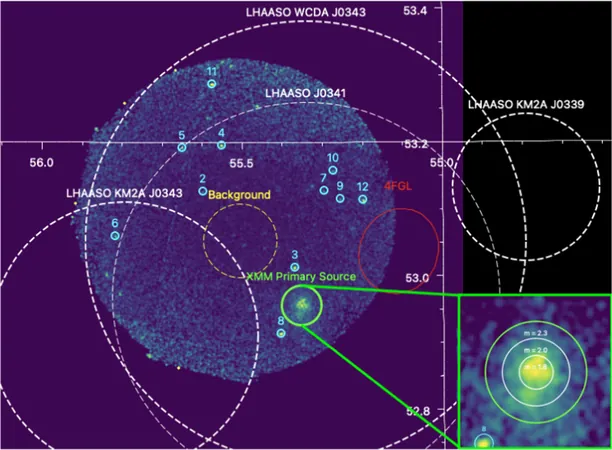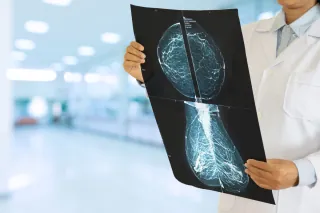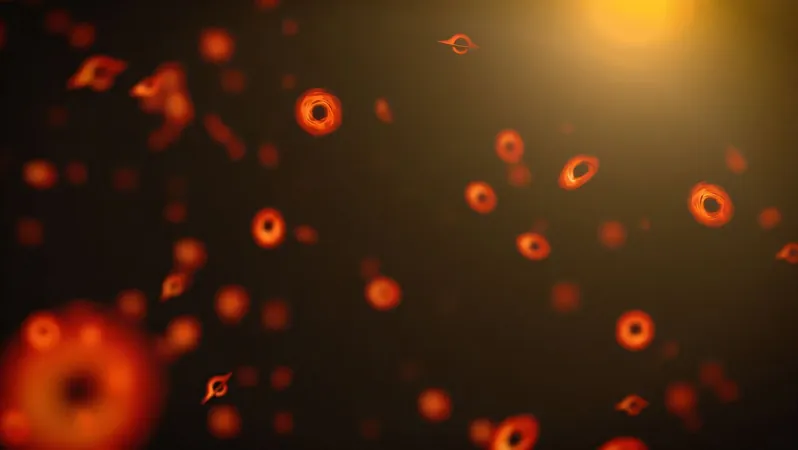
Unlocking the Cosmic Mystery: The Hunt for the Origins of Cosmic Rays Intensifies
2025-06-09
Author: Sophie
In a groundbreaking study from Michigan State University, astrophysicists have moved closer to solving a mystery that has eluded scientists for over a century: the origins of galactic cosmic rays.
Cosmic rays—high-energy particles darting at near-light speed—are believed to arise from sources scattered throughout the Milky Way and beyond. However, pinpointing their exact origins has been a puzzle since their discovery in 1912. Assistant Professor Shuo Zhang and her team spearheaded two pivotal studies recently presented at the 246th meeting of the American Astronomical Society in Anchorage, Alaska.
Potential sources of these energetic particles include black holes, remnants of supernovae, and regions where stars are formed. These astonishing cosmic events are known to generate neutrinos—minuscule particles that not only permeate the depths of space but also pass through us here on Earth.
Zhang emphasized the relevance of cosmic rays to our everyday lives, stating, "About 100 trillion cosmic neutrinos from distant sources, like black holes, cross through your body every second. Wouldn't you want to know where they come from?"
The power of these cosmic ray sources is immense; they can energize protons and electrons to levels vastly exceeding what we can achieve with advanced particle accelerators on Earth. Zhang’s research group is investigating these cosmic particle accelerators, termed PeVatrons, to uncover their nature and the mechanisms behind their extraordinary energy production. Insight into these could advance our understanding of key physics questions, such as the evolution of galaxies and the elusive nature of dark matter.
In their latest research, Zhang's team delved into multi-wavelength studies of PeVatron candidates with unidentified sources. The first of their papers, published in The Astrophysical Journal, details the work of postdoctoral researcher Stephen DiKerby, who analyzed data from the Large High Altitude Air Shower Observatory (LHAASO). He discovered that a mysterious PeVatron candidate is actually a pulsar wind nebula—an expanding bubble housing relativistic electrons energizing from a pulsar. This groundbreaking identification marks a rare success in classifying the origins of PeVatrons.
Meanwhile, a second paper published in the Research Notes of the American Astronomical Society showcased contributions from MSU undergraduates Ella Were, Amiri Walker, and Shaan Karim. They utilized NASA’s Swift X-ray telescope to study X-ray emissions from lesser-known cosmic ray sources identified by LHAASO, establishing upper limits for their emissions and paving the way for future research.
Zhang noted, "By identifying and classifying cosmic ray sources, our efforts aim to create a comprehensive catalog that could become a valuable resource for future neutrino observatories and traditional telescopes, facilitating in-depth exploration of particle acceleration mechanisms."
Looking ahead, Zhang's team plans to embark on another pivotal study, integrating data from the IceCube Neutrino Observatory with X-ray and gamma-ray telescopes. They aim to understand why certain cosmic ray sources produce neutrinos while others do not, exploring the processes behind their creation.
Zhang concluded, "This project necessitates collaboration between particle physicists and astronomers and is poised to be an ideal endeavor for MSU’s high-energy physics group."
As researchers continue to unearth the secrets of cosmic rays, the quest not only enhances our understanding of the universe but also invites us to rethink our connection to the cosmos.









 Brasil (PT)
Brasil (PT)
 Canada (EN)
Canada (EN)
 Chile (ES)
Chile (ES)
 Česko (CS)
Česko (CS)
 대한민국 (KO)
대한민국 (KO)
 España (ES)
España (ES)
 France (FR)
France (FR)
 Hong Kong (EN)
Hong Kong (EN)
 Italia (IT)
Italia (IT)
 日本 (JA)
日本 (JA)
 Magyarország (HU)
Magyarország (HU)
 Norge (NO)
Norge (NO)
 Polska (PL)
Polska (PL)
 Schweiz (DE)
Schweiz (DE)
 Singapore (EN)
Singapore (EN)
 Sverige (SV)
Sverige (SV)
 Suomi (FI)
Suomi (FI)
 Türkiye (TR)
Türkiye (TR)
 الإمارات العربية المتحدة (AR)
الإمارات العربية المتحدة (AR)